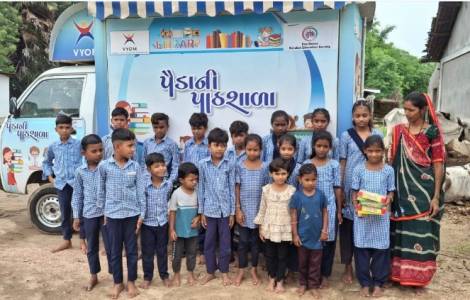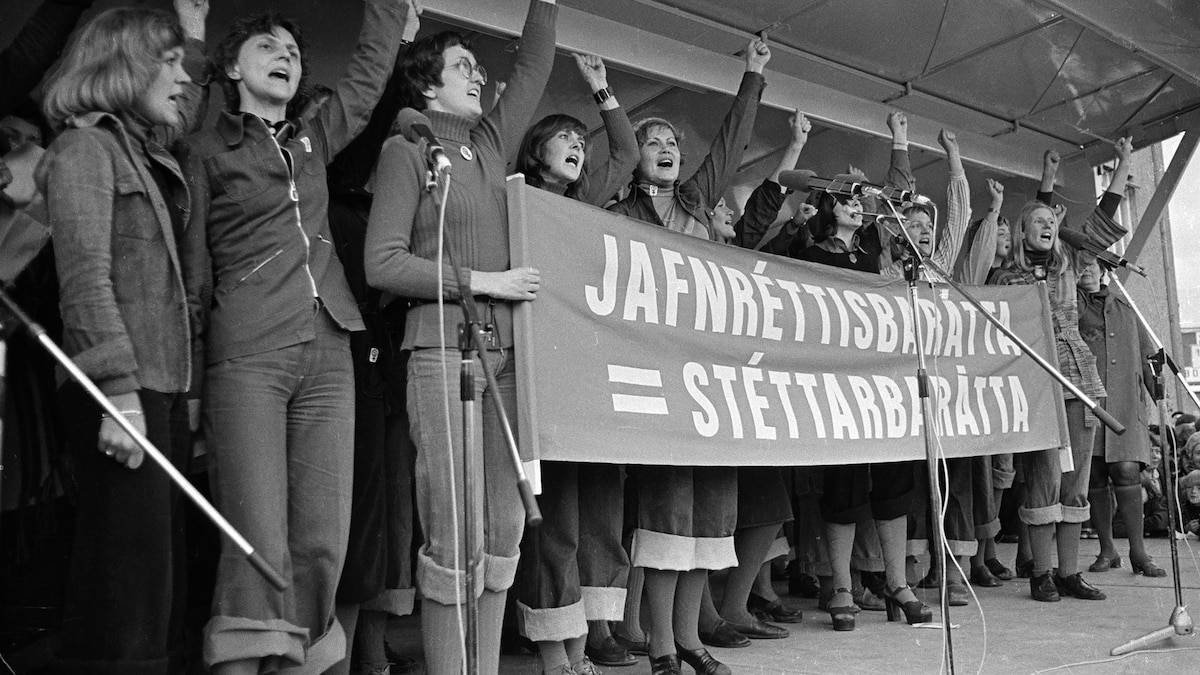Report on the Salesian Initiative to Eradicate Child Marriage in Gujarat, India, in Alignment with Sustainable Development Goals
1.0 Executive Summary
A targeted awareness campaign is scheduled from November 1, 2025, to January 26, 2026, in the Indian state of Gujarat. Led by the Salesians in collaboration with the NGO “Just Rights for Children,” the initiative aims to eradicate the practice of child marriage. This report details the campaign’s objectives, strategies, and its significant contributions to achieving multiple United Nations Sustainable Development Goals (SDGs).
2.0 Alignment with Sustainable Development Goals (SDGs)
The campaign directly addresses several critical SDGs, positioning local action within a global development framework. The primary alignments include:
- SDG 5: Gender Equality: The initiative’s core mission is to eliminate child marriage, a harmful practice explicitly targeted under SDG 5.3. By protecting girls from early and forced marriage, the campaign promotes gender equality and empowers young women.
- SDG 16: Peace, Justice and Strong Institutions: In line with SDG 16.2 (End abuse, exploitation, trafficking and all forms of violence against and torture of children), the project works to protect children’s rights and shield them from the exploitation inherent in child marriage.
- SDG 4: Quality Education: Child marriage is a primary barrier to education, particularly for girls. By preventing it, the campaign ensures children can continue their education, contributing to SDG 4’s goal of inclusive and equitable quality education for all.
- SDG 3: Good Health and Well-being: The initiative promotes the physical and mental health of children by preventing the severe health risks associated with early pregnancy and childbirth, supporting the objectives of SDG 3.
- SDG 17: Partnerships for the Goals: The campaign exemplifies SDG 17 by fostering close cooperation between civil society organizations (Salesians, “Just Rights for Children”), government bodies, and community leaders to achieve a common goal.
3.0 Campaign Background and National Context
Despite Indian law setting the minimum age of marriage at 18 for girls and 21 for boys, the practice remains prevalent. According to UNICEF data, India has the highest absolute number of child brides globally, with over 200 million women married before adulthood. This initiative builds upon the national “Bal Vivah Mukt Bharat” (India Free from Child Marriage) movement, which was launched on November 27, 2024. The national campaign has already demonstrated significant success, having reportedly prevented over 190,000 child marriages across the country.
4.0 Implementation Strategy and Key Activities
The campaign was officially launched on October 13, 2025, in the Gujarat districts of Anand, Vadodara, and Chhotaudepur. The strategy involves a multi-pronged approach based on community engagement and stakeholder collaboration.
- Preparatory Phase (June-September 2025): Foundational work was conducted across 150 villages, which included community meetings, awareness-raising through graffiti, and securing commitment declarations from 150 families.
- Community Pledges: A significant outcome of the launch event was securing written pledges from over 300 parents, who committed not to marry their children before the legal age.
- Survivor Advocacy: A nationwide workshop titled “Voices of Survivors” was held, featuring 53 participants who shared stories of resilience, thereby providing powerful testimony against the practice.
- Stakeholder Engagement: The 100-day awareness campaign will specifically target key community influencers, including religious leaders who officiate weddings, village leaders, and proprietors of wedding-related institutions.
5.0 Conclusion
The Salesian-led campaign in Gujarat represents a critical, localized effort to uphold children’s rights to education, health, and protection from exploitation. By mobilizing community support and fostering multi-stakeholder partnerships, the initiative not only addresses a deeply entrenched social issue but also makes a direct and measurable contribution to India’s progress toward achieving the Sustainable Development Goals, particularly those related to gender equality, justice, and education.
1. Which SDGs are addressed or connected to the issues highlighted in the article?
SDG 5: Gender Equality
- The article’s central theme is the campaign to “completely eradicating child marriage.” Child marriage is a harmful practice that disproportionately affects girls, violating their rights and hindering gender equality. The campaign directly addresses this issue.
SDG 16: Peace, Justice and Strong Institutions
- The article discusses the legal framework in India, which “sets the minimum age of marriage at 18 for girls and 21 for boys.” The campaign aims to uphold this law and protect children from the abuse and exploitation inherent in child marriage, aligning with the goal of ending violence against children.
SDG 4: Quality Education
- The text explicitly states that the campaign seeks to protect children from “losing their childhood and their educational and developmental opportunities.” This directly connects the issue of child marriage to the goal of ensuring inclusive and equitable quality education for all.
SDG 17: Partnerships for the Goals
- The initiative is a multi-stakeholder effort. The article highlights the “collaborative efforts of government officials, civil society organizations, and community leaders,” including the Salesians, the NGO “Just Rights for Children,” and the Minister of Women and Child Development, demonstrating a partnership approach to achieving the goals.
2. What specific targets under those SDGs can be identified based on the article’s content?
SDG 5: Gender Equality
- Target 5.3: Eliminate all harmful practices, such as child, early and forced marriage. The entire article is about a campaign with the stated “aim of completely eradicating child marriage,” which is a direct effort to achieve this target.
SDG 16: Peace, Justice and Strong Institutions
- Target 16.2: End abuse, exploitation, trafficking and all forms of violence against and torture of children. The article describes child marriage as a problem that leads to “losing their childhood” and the campaign’s success in having “helped prevent over 190,000 child marriages and protect countless girls and boys.” This prevention of a harmful practice is a direct contribution to ending the abuse and exploitation of children.
SDG 4: Quality Education
- Target 4.1: By 2030, ensure that all girls and boys complete free, equitable and quality primary and secondary education. By working to end child marriage, the campaign helps remove a major barrier that prevents children, especially girls, from completing their education, as the article notes they lose “educational and developmental opportunities.”
SDG 17: Partnerships for the Goals
- Target 17.17: Encourage and promote effective public, public-private and civil society partnerships. The campaign is a clear example of this target in action, described as a collaboration between the Salesians (a faith-based organization), an NGO (“Just Rights for Children”), government bodies (Minister of Women and Child Development), and community leaders.
3. Are there any indicators mentioned or implied in the article that can be used to measure progress towards the identified targets?
Indicators for Target 5.3 (Eliminate child marriage)
- Prevalence of child marriage: The article cites a UNICEF statistic that “India is still the country with the highest number of young people forced into marriage before reaching adulthood: over 200 million.” This figure serves as a baseline indicator of the scale of the problem.
- Number of child marriages prevented: The article mentions that the national campaign has “helped prevent over 190,000 child marriages,” which is a direct indicator of progress in combating the practice.
Indicators for Target 16.2 (End abuse against children)
- The number of prevented child marriages (over 190,000) also serves as a proxy indicator for this target, as each prevented marriage represents a case of potential child abuse and exploitation being stopped.
Implied Indicators of Campaign Implementation and Community Engagement
- Community commitment: The article mentions that “more than 300 parents from the three districts signed a written pledge” not to marry off their underage children. This is an indicator of changing social norms and community buy-in.
- Awareness-raising reach: The campaign’s success can be measured by its outreach efforts, such as raising awareness “in 150 villages through graffiti, community meetings, and declarations of commitment from 150 families.”
4. Table of SDGs, Targets, and Indicators
| SDGs | Targets | Indicators |
|---|---|---|
| SDG 5: Gender Equality | 5.3: Eliminate all harmful practices, such as child, early and forced marriage. |
|
| SDG 16: Peace, Justice and Strong Institutions | 16.2: End abuse, exploitation, trafficking and all forms of violence against children. |
|
| SDG 4: Quality Education | 4.1: Ensure that all girls and boys complete free, equitable and quality primary and secondary education. |
|
| SDG 17: Partnerships for the Goals | 17.17: Encourage and promote effective public, public-private and civil society partnerships. |
|
Source: fides.org







